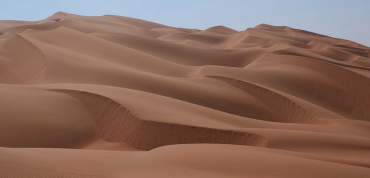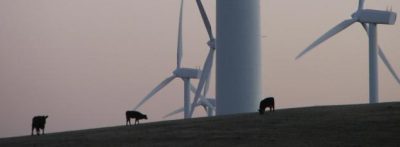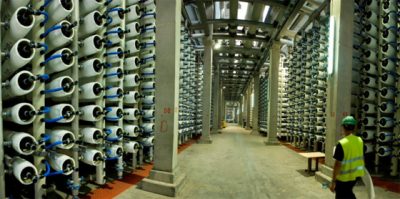 Nuclear energy is a low carbon power source, but whether or not it should be considered a renewable energy source is long debated and fought over –- even in the Middle East where the industry is nascent.
Nuclear energy is a low carbon power source, but whether or not it should be considered a renewable energy source is long debated and fought over –- even in the Middle East where the industry is nascent.
Like the oil industry upon which our modern industrial world is built, nuclear does and will play a role in the world’s energy supply. Nuclear energy is already an important source of power for some of the world’s most “green” perceived countries like Canada, so why shouldn’t responsible countries in the Middle East also have access to nuclear if it’s done in a safe and careful way? Can the industry be “greened”?
This is what I am asking Jack Shillito, a senior analyst for Nuclear Energy Insider.
He talks with Green Prophet about nuclear energy developments in the Middle East in the context of an upcoming Nuclear Construction Conference, MENA in Dubai this September, hosted by Nuclear Energy Insider. This will be the ultimate space for stakeholders in the business from the US, Europe and the Middle East to meet and make deals.
Shillito, based in London, is well aware of the safety and political considerations unique to the Middle East, as well as cultural differences that must be overcome for businesses looking to enter the nuclear market there. Like anywhere else in the world, any nuclear sites built in the Middle East, whether in Saudi Arabia, Jordan or Egypt, must be built on solid ground physically and financially.
There are currently five countries in the Middle East in various development stages of establishing nuclear energy. In terms of opportunities in the market, the top countries, according to Shillito, are:
1. Saudi Arabia
2. United Arab Emirates
3. Turkey
4. Jordan
5. Egypt
Let’s see what’s happening in each of these countries, kingdoms or emirates, based on advances on the ground:
The United Arab Emirates is the most progressive in nuclear, with four units to be built in the near future. The US$20 billion project is expected to produce 5,600 megawatts of energy, which would provide up to a quarter of the Emirate’s electricity needs. The first activity is in the “Barakah” area to be run by the Emirates Nuclear Energy Corp., with the construction work for the first two units contracted out to the Korean company, KEPCO: “They have laid the foundations, and have installed the containment liner plates on Unit 1. They are well underway,” says Shillito.
Foundations are being laid for a second unit, and sites 3 and 4 are up for licensing: “So there are business opportunities there,” Shillito points out. Major US vendors such as Westinghouse and CH2M Hill are involved to support supply chain needs.
Saudi Arabia is the second most advanced “nuclear” nation in the Middle East: KA CARE – King Abdullah City for Atomic and Renewable Energy – is being established as part of a huge city with solar farms and nuclear energy power plants. “It will go ahead but nothing in terms of construction has started,” Shillito says. “The money is there and the background checks are in. If they go the UAE way they may approach the international money markets for multi-billion dollar loans since the worldwide interest rates are so low. But they do have their own investment fund for it.”
Turkey is the third most advanced in terms of nuclear development in the Middle East. They are working on a new build and have signed their intent with Russia’s Rosatom group at a site on the south coast of Turkey at Akkuyu on the Mediterranean Sea. It will generate 1200 MW and be licensed by the Turkish Government, but doesn’t yet have financing. About $22 billion is needed. These AKKUYU reactors are expected to go online between 2020 and 2023. Rosatom will be building and operating the reactors and after time it will hand over operations and ownership to Turkey.
Turkey is looking at a second potential site on the Black Sea, at Sinop. Licenses have been awarded to a French and Japanese consortium to own, build, construct and engineer the plant.
Jordan, fourth in nuclear development progress, is working on a chosen site in the north of the country. If the proposed units are to be built, they could be cooled by sewage waste. The conflict in Syria now threatens the progress of this site.
Egypt, where radioactive material was not long ago stolen from an existing plant, is beginning to explore a potential upgrade of its nuclear ambitions at this time, and with its current political crisis it is likely that business will be stalled until some form of stable governance takes hold. The country has huge power demands and is currently building new polluting coal power plants. But for those risk averse, Egypt could offer big opportunities. Read here about how Egypt looks to build 11 nuclear power plants.
Nuclear Energy Insider projects that over the next decade 37 reactors worth over $200 billion could be built in the Middle East and North Africa.
So how can interested parties get involved? Shillito agrees that the region is diverse since it covers countries from Algeria to Azerbaijan, which, taken individually, can’t be lumped together. But, he points out, any new reactors that will be built in the Middle East will be safer than those built in the 60s and 70s in developed nations, and there will be more safety elements in them if these countries follow in the steps of the United States and others.
Every single “what if” must be taken into account. The Middle East nuclear market needs to look out for possible “tsunamis” that Japan missed.
There could be firestorms, armed assaults, or dust storms. Limited water supplies and future water wars, and civil wars threaten the Middle East.
Shillito is certain that any nuclear developments that go ahead will be secure because they must comply with the International Atomic Energy Agency (IAEA). “If something went wrong, it would put the whole nuclear community around the world up against a wall, and the whole community would be blamed. The big challenge then is regulation and putting government systems in place so that nuclear newcomers understand the implications of running their own reactors one day.”
Business players involved in the Middle East are from the United States, South Korea, Russia, France, Germany, and Japan.
If you’re a decision maker for Middle Eastern energy projects and want to explore nuclear, how is it done? Shillito says that most in this position already know where to go, such as the IAEA, and associations of nuclear engineers and physicists in the specific country. Interested groups usually go to companies such as Pöyry, a Finnish nuclear consultancy, to work with siting and seismic issues. They help lay out the industry’s accepted 19 point plan for nuclear energy.
In the Middle East though, where safety boots, and even hard hats are not enforced or even encouraged, safety issues will be a major obstacle. That equates to business opportunities for companies providing that sort of training and expertise: “Pro-nuclear western nations are not simply paying lip service to safety – they really mean it. If a site is not safe it would be the cause of their own downfall. They are ceaseless in their quest for safety in this industry,” Shillito says.
As for making operations run safer and smoother, there are a number of options for countries exploring nuclear. The UAE has asked the Koreans to run the whole operation. Saudi Arabia is more sustainable when it comes to dealing with the workforce as they want local Saudis involved in running and operating the plant. Turkey wants to follow the Saudi model as well.
Consider that a fast-paced developing China now has 26 reactors in the pipeline. And for firms tired of the slow growth in Europe, the Middle East could be a new point to explore growth. From North America to Europe and Russia, Shillito invites all nuclear companies to be part of the Fourth Annual Nuclear Construction Conference, MENA, 24-25 September, 2013, Grosvenor House, Dubai.
From the conference website: key points covered at this two-day event will include:
+Understand the expectations MENA states have for nuclear power and detail the solutions these emerging nations need to secure nuclear power
+See how to effectively navigate developing regulatory frameworks and the impact this has upon design and supplier licensing
+Benefit from international and regional operational case studies to help mitigate technical, procedural and organizational challenges and ensure efficient project delivery
+Hear about the safety and cultural considerations MENA nations must overcome before, during and after construction to secure excellence and quality
+Develop a comprehensive construction plan that details supply chain risk, scheduling contingencies and key workforce recruitment to ensure timely nuclear deployment.
Keynote speakers will include the head of nuclear for the UAE, and a speaker from the IEAA.




There cannot be enough energy of any kind to supply 7, 8, 9, 10, 11, 12 billion money-growth-addicted people who refuse to safely recycle their waste materials. They are polluting the planet out of balance and it is reacting with extremes of weather that will destroy them.